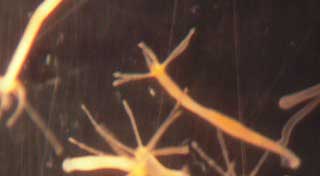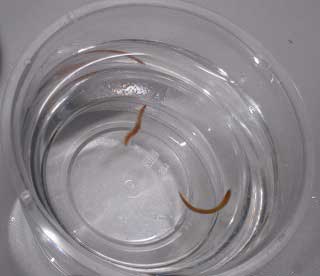Japanese report
AS-HOPE report
Number:AS-22-G004
Study into evolutionary aspects of higher brain and information gathering in EMBO Conference
Report:Hajime Hoshino
Date:2010/09/23 - 2010/10/02
In order to promote research on the evolutionary aspects of the brain, we visited Dr.
Thomas Holstein's laboratory at Heidelberg University.
We observed Nematostella and Hydra and learned the method of rearing them.
Knowledge about brain evolution will greatly contribute to advancing the research on the brains of higher organisms.
In Nematostella, neurons gather around the oral region and form the oral nerve ring.
The dense network of nerves may regulate feeding behavior, which is important for survival, and its formation may be related to the evolutionary origin of the brain in higher organisms.
For the purpose of the functional elucidation of the more complex brain in primates, I felt the need to making a comparative study of behavior in Nematostella (which doesn't have a central nervous system) and Dugesia (which has a simple central nervous system.
And I research on the relationship between the CNS and behavior in Dugesia) with a view toward how the brain achieves the integration of much external information.
Then, we visited Dr.
Detlev Arendt's laboratory at the EMBL Heidelberg, where they conduct studies on Platynereis and Amphioxus.
Platynereis has a developed central nervous system, and its sexual behavior was very striking for me.
As soon as the male and female meet each other, they mate using a peculiar procedure.
With the evolution of organisms evolution to sexually reproducing animals, they need to acquire instinctive sexual behavior.
I have been interested in research on the relationship between the acquisition of sexual behavior and the changes of structure and function in the brain, and from Platynereis I got ideas for a new direction for functional analysis of the brain.
After that, we attended the EMBO Conference, where I could learn a lot of the latest research developments on the brain in zebrafish and Xenopus.
Hydra
Nematostella
European Molecular Biology Laboratory
Platynereis dumerilii
European Molecular Biology Organization Conference

Hydra

Nematostella

European Molecular Biology Laboratory

Platynereis dumerilii

European Molecular Biology Organization Conference
AS-HOPE Project< > >
|




